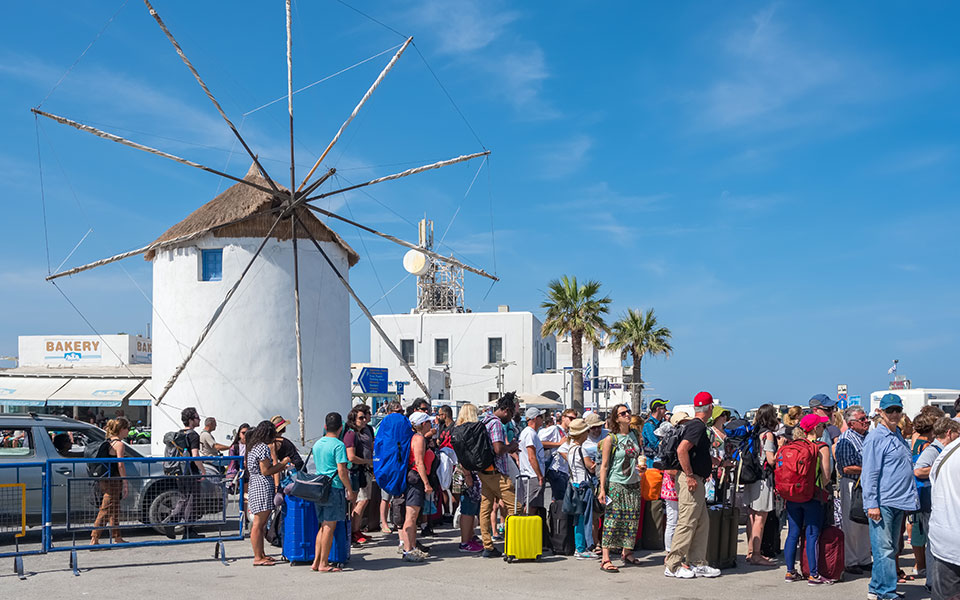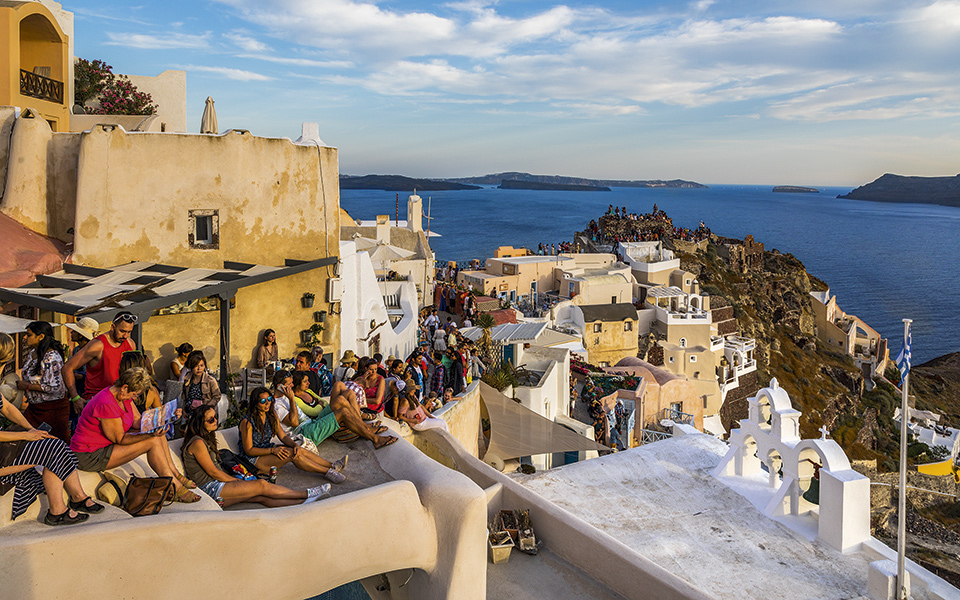Mykonos and Santorini, the gems of the South Aegean, have set a European “record” for overtourism, with an average of 110 overnight stays per resident in 2022. This unprecedented statistic highlights both the allure and the challenges faced by these iconic Greek islands, renowned for their stunning landscapes and vibrant nightlife.
“Nowhere else in the EU is overtourism as intense as on the Greek islands of the South Aegean,” reports Tagesschau, referencing Eurostat data published by the German Federal Statistical Office. This revelation underscores the unique pressure on Mykonos and Santorini, far surpassing other tourist hotspots.
To put these figures into perspective, the Ionian Islands, including Corfu, recorded 81 overnight stays per resident. Meanwhile, the Croatian Adriatic coast saw 66 overnight stays per resident. Even the region of Mecklenburg-Western Pomerania in Germany, known for its high tourism, pales in comparison with just 18 overnight stays per resident.
The allure of Mykonos and Santorini is undeniable, drawing visitors from around the globe. However, the sheer volume of tourists presents significant challenges for local residents and the environment. The picturesque streets and pristine beaches that attract millions are now grappling with the impacts of overtourism, from overcrowding to environmental degradation.

© Shutterstock
Despite these challenges, tourism remains a cornerstone of the Greek economy. Eurostat data for 2022 shows that Greece’s accommodation sector had the largest share in gross value added among EU countries, at 7.1%. This is followed by Croatia, Portugal, and Spain. In contrast, Germany’s percentage stands at 1.4%, significantly below the EU average of 2.5%, according to Deutsche Welle.
The economic benefits of tourism are undeniable. The industry supports local businesses, creates jobs, and contributes to the country’s GDP. However, the downside of mass tourism cannot be ignored. As ZEIT Online notes, “despite the importance of tourism for the economy, many holiday regions across Europe are experiencing the impacts of mass tourism.” The pressure on infrastructure, the strain on natural resources, and the rising cost of living for locals are critical issues that need addressing.
In absolute numbers, Spain’s Canary Islands lead with a staggering 89.3 million overnight stays, averaging about 245,000 people staying overnight daily on one of the islands. However, the impact of these numbers is felt differently due to the larger size and infrastructure of the Canary Islands compared to the smaller, more delicate ecosystems of Mykonos and Santorini.

© Shutterstock
The situation in Mykonos and Santorini mirrors broader concerns across popular tourist destinations in Europe. Recently, the Balearic and Canary Islands have seen protests from local residents. These communities are increasingly vocal about the downsides of mass tourism, including rising housing prices and the erosion of local culture.
The challenge for Mykonos, Santorini, and other tourist-heavy regions is to find a balance between reaping the economic benefits of tourism and preserving their unique character and environment. Sustainable tourism practices, such as limiting the number of visitors, promoting off-season travel, and investing in infrastructure, are crucial steps towards achieving this balance.
As the world continues to embrace travel, the stories of Mykonos and Santorini serve as a poignant reminder of the need for sustainable tourism practices. Balancing economic gain with environmental and social well-being is not just a local issue but a global imperative.
With information in Greek from moneyreview.gr.












